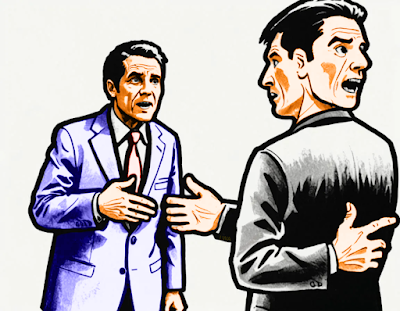In my last post I talked about the dangers of social media. Today I want to talk briefly about a recent event and how it needed to be dealt with. Names are changed to protect people.
The aim of this post is to educate parents and fellow autistics about how this problem started, why it became such a big deal and how to deal with it if and when it does happen to you. Even if you don't read this whole post, at least skip to the end where I give some recommendations for ensuring that this doesn't happen to you.

How the Problem Started
I received a call about an autistic boy who had an issue on social media. Essentially the crux of the problem was other family members who followed his channel on YouTube were being confronted with videos containing bad language and nudity. This included younger children, so clearly it was a issue.
For the sake of clarity, I'm going to call this autistic young adult "Robbie". Robbie is in his early twenties, he is fairly self-sufficient and is able to communicate well. If you met Robbie you would know that he was autistic but he functions well enough to go out by himself and to be online without supervision. He's an adult and he makes sensible decisions.
Robbie is playful and fun but is also quite a well-behaved and respectful boy. He is not the kind of person who would intentionally put nudity or bad language in front of young relatives.
So the question is, what really happened.
Fake Friends and Pranks
One of the key issues affecting autistic people is their inability to distinguish friends from fake-friends. It's quite hard for autistic people to make friends as a lot of people don't look past first appearances. As a result, it's common for anyone who says or does nice things to be considered friends. This also means that it's easy for a bully to pretend to be a friend.
This is a big problem in real life but it's an even bigger problem online because a bully can be acting nice in one "channel" and can be making fun of you in another. That's exactly what happened to Robbie.
Robbie was interacting with "friends" in an adult-level channel on a different platform. They were playing games and some of those games included dares, like releasing a balloon in a crowded shop so it would fly around the room. Fun stuff. Things that you see on YouTube funny videos every day.
Over the months of the interaction, the games would change and these "friends" would film themselves doing low-level harmless stunts and would then tell Robbie to do something that was always slightly "next-level".
These things could include, shouting a bad word in a crowded place, climbing into a sales bin, jumping out and surprising someone or throwing a stuffed toy from one side of a shop to the other.
One of the "dares" included a naked dance in the living room, which of course, you might think was safe because nobody was home and it was only the "friends" on the other end of the video who were watching.
Another disturbing trend was the increasing requests for Robbie to capture other people's reactions and to follow and secretly film people. This ended up landing Robbie in trouble.
All the time, Robbie just thought he was playing games of pranks with his online friends.
Crisis Point
What Robbie didn't know was that those same "friends" were collecting the videos plus information from his other social media platforms, like Facebook and were compiling their own videos. In those videos, they cut everything out except footage of Robbie doing bad things. They added their own derogatory songs and captions and added details such as Robbie's full name, his social media tags and his home town location.
Then they released those videos on YouTube with just enough nudity removed to get past the automated censors. When they released these videos, they tagged each other (as you would expect, it turned out that they weren't using real names) and more importantly, they tagged Robbie and also anyone else they could find who was following him.
What happened next was automatic. If you watch something on YouTube, it will automatically give you recommendations for similar content. The more matching tags there are, the more likely it is that you will receive that recommendation.
In this case, Robbie's young relatives were watching his regular normal posts on YouTube, when the channel recommended more from Robbie. Since the videos were tagged with Robbie's full name and online tags and since these are reasonably individual for each user, the tagged videos quickly became the highest recommendations after videos played on his channel.
Of course, people complained and many wrote comments telling him not to post this stuff but the more that people interacted with the video, the more important it looked to the YouTube algorithm and the more it was recommended.
What's worse is that if you comment on the video, even to say that it's disgusting, then the YouTube algorithm will detect that you interacted with the video and will recommend it to YOUR friends.
Getting the Problem Fixed
You would think that getting YouTube to remove a video like this where the intention is clearly bullying would be easy but it took three weeks of badgering them to get it resolved. Here's what to do.
- Don't Comment: The more you comment, like or dislike a video, the more it gets recommended - and the more it gets tied to your account.
- Don't Interact with the Bully: Shutting down a bully works best if they don't know that you're coming after them. Don't interact, don't comment, just get to work shutting them down.
- Try to watch Incognito: If you are logged in to YouTube, the more you watch a video, the more it will get connected to your profile and recommended to your friends. You will also find that YouTube recommends similar videos. If you need to check out other videos from the same people, open them in an incognito window.
To open an incognito window in your browser, press Ctrl+Shift+N (in Windows for Chrome or Edge). Not all videos will be supported in incognito as YouTube enforces younger age limits if you are not signed in. If you can still see the video in incognito mode, it's available to children.
You'll want to use incognito mode to check out other videos by the same person and see if there's a clear pattern of bullying. The more you can find out, the better. - Report the Video: You have to be logged in to report the video, so no incognito mode there. To report a video, follow these steps.
- Report other Videos: If the same bully has posted other videos (which you checked out in incognito mode), and if those videos are bullying as well, please report them too. The more you report, the better the chances of getting the bully's entire channel shut down.
- Report the User/Channel: If you get enough videos reported, you will be able to report the user or the Channel. Don't try this if there's only one offending video.
- Don't fake report: Submitting a fake report will hurt your credibility. Make sure that you report a video that is in clear violation and that you include timestamps of when the offending material appears. If a video isn't clearly a violation, don't report it.
- Get Others to Report: Keep a list of what you have reported and pass this around to other trusted individuals. The more reports that Google gets, the more likely they are to investigate the video.
- Keep the evidence: If you can download the videos, keep until the whole saga is dealt with. More importantly, keep evidence of every submission that you have made to authorities to ask them to remove the videos - and every response from those authorities.
- Get Official Channels Involved: There are limits on when you can call in official channels. We weren't able to get them involved until a minimum of 48 hours after the response from Google. As it turned out, the local Police were unable to do anything however it was still worth getting them involved as there was a danger that someone could attack Robbie based on the claims in the video.
Two days after the Communications Ombudsman contacted Google, the first of the videos came down. It took a further couple of weeks for the rest of them to come down. The bullies attempted to start other channels with similar content but these came down a little easier.
It's still not over. It will never actually be over because "online is forever" but things are at least better now than they have been for while.
Never Again - How to Stop this from Happening
I wish I could say that there's a way to stop this but there simply isn't. There are however things that you and your children can do to reduce the likelihood and the impact in the future.
- Be Less Recognizable: If possible, don't post pictures or videos of yourself. This is easier said than done. It makes sense to be who you are on Facebook and LinkedIn. It also makes sense that you might appear in your own videos on YouTube.
If your YouTube videos are "fun" or "pranks", at least don't put them under your real name. Consider creating an entirely separate channel (on a different gmail account). - Don't Connect Platforms: If you're going to engage a different audience, such as a gaming audience, don't connect the profiles. Use a different name, tag and profile picture on other platforms. Try not to have friends who are on both platforms unless you trust them completely.
- Don't Disclose Information: Keep some platforms for the "Real You" but on the others, be sure not to mention;
- Your actual name
- Where you live (apart from country)
- Your middle name (if you have to use your name, don't mention the middle part)
- Your primary email address (get another one if you need it)
- Your date of birth (keep that off all platforms if possible or use a fake one)
- Identifying numbers (don't post anything like driver's licence, social security, credit cards etc online).
- Remember that Everything Online is Forever: Just because Snapchat disappears for you, it doesn't mean that it disappears for everyone. It's very easy to record any screen anywhere. You can't stop it. Don't put anything online in front of a group that you need kept private. It only takes one person in that group to capture it and put it in front of everyone. In particular, if you don't feel comfortable doing something, don't do it and certainly don't record it.
- Beware of Fake Friends: Unless you know someone in Real Life (and even then sometimes it's not safe), you can't assume that anyone you meet online is not a fake friend. Look for telltale signs of "fakeness".
One of the key signs of a fake friend is someone who continually fights and makes up. For example, they may attempt to badger you into doing something and will then back off if they think that you're going to stop being friends.. but then they try to badger you with something else. These people are not friends. They are using you.
I hope this helps everyone to be safer online.

